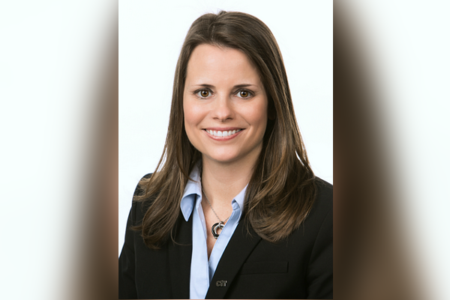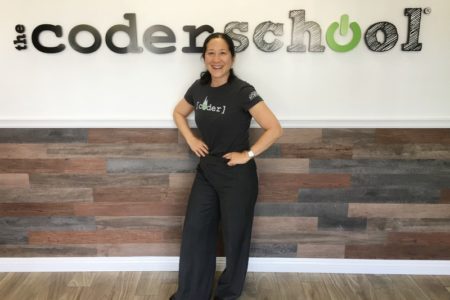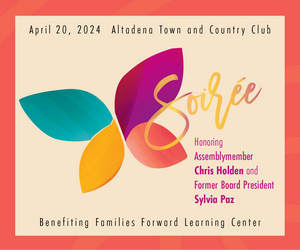
“How do scientists know what’s in the middle of planets?”
In “Ask a Caltech Student,” a new Facebook group, Pasadena-area K–12 students and families are encouraged to reach out to Caltech graduate students with science and math questions that are related to the schoolchildren’s schoolwork and homework.
The group was created in March of 2020 by the Institute’s Center for Teaching, Learning, and Outreach (CTLO), in collaboration with Raj Katti, a graduate student in physics, in response to the temporary closure of schools in Los Angeles County due to the COVID-19 crisis and the resultant move to distance learning.
“I realized that if there are Caltech grad students with some free time and Pasadena-area students with questions about their homework, there had to be a way to connect up those two groups,” says Katti, who brainstormed with CTLO outreach program manager Kitty Cahalan to come up with the plan. Since CTLO is not set up to run direct tutoring programs, Cahalan and Katti landed on the concept of an open forum on social media where people could ask questions and potentially receive multiple answers from students in a threaded conversation.
Within 24 hours of creating the Facebook group, 220 people had become members; about two-thirds of those were graduate students, and a third were Pasadena community members. Initially, Cahalan limited membership to families within 10 miles of Pasadena but then expanded that to 20 miles to include those from Glendora to Burbank and points south. As of April 3, that number had risen to 320.
Katti attributes the enthusiasm around this initiative to three factors, “the enjoyment of teaching, an interest in helping out the community, and good old-fashioned boredom.” Fellow graduate student Michael Mazza, whose expertise is in chemistry, adds, “Grad students have had to suspend their research activities for weeks and will continue to do so. Engaging with students who are learning the material for the first time can reignite the feeling of discovery and excitement that first pushed us down this career path.”
“It’s really providing an opportunity for the grad students to share and celebrate what they love about what they do,” says Cahalan, “and they’re hungry for that right now.”
Rather than provide answers to specific problems or equations, the goal is for the Caltech students to explain the underlying concepts, post links to outside content, and share resources for additional help. The group is moderated by Cahalan and CTLO associate director for educational outreach Mitch Aiken.
“What are some good ways to explain to a 9-year-old why batteries shouldn’t be allowed to connect to each other’s ends?”
The Caltech students need to calibrate their responses to a K–12 audience, which brings its own challenges, but has become a learning opportunity those involved have embraced. “Thinking of how to best describe and introduce new scientific concepts to students is an intellectually demanding and rewarding experience in its own right, so I definitely gain a greater understanding of the material myself,” says Mazza. “The sign of a talented scientist isn’t how complicated they make their work sound, it is how clearly and concisely they can illustrate it.”
In response to the 9-year-old’s question about batteries, Mazza responded: “When I learned about batteries, my teachers described them as hoses of water. So, electrons, like water, want to flow in the same direction. When you have two batteries attached at opposite ends, it is the same as putting two fire hoses pointing in the same direction. That doubles the amount of water going through them! If you put them at each other’s ends, it’s similar to pointing two hoses together. That makes the water run into each other, and nothing flows.”
As Cahalan notes, the threaded conversation format is also helpful, since a student who does not understand the first explanation of a problem offered may have an “aha” moment with the second or third. “Somebody may explain it one way,” she says, “but then maybe somebody else says, ‘Here’s how I learned it,’ or, ‘Here’s another way of approaching this problem.'”
For the graduate students involved, gaining teaching experience is a powerful motivator. “I’d like to improve my teaching,” says Katti. “My adviser [Michael Roukes] likes to tell me that most of teaching is figuring out your audience—what words they are familiar with, what concepts do they already know. Usually I give research presentations to colleagues or faculty, or I teach undergrads. Now, the audience is middle and high schoolers, but the process is the same.”
Though the focus is currently on schoolwork and homework, Cahalan sees the potential for a broader community impact. “I would love to have a space where kids who have these questions can go in and just say, ‘Talk to me about your research or career path.'”
“If we all have to slow down and explore things from our computer now,” she adds, “there are probably worse things to have access to than a bunch of really smart, excited grad students who have some time to talk about what they’re interested in.”










